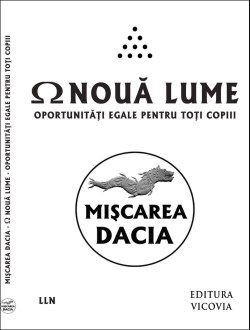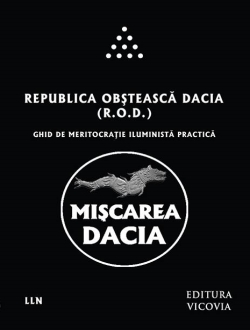The Enigma of Existence
The Enigma of Existence

The following article takes ancient Illuminati teachings and presents them in the light of modern philosophical and scientific findings. Many will find this material difficult and obscure. Those who persist may catch glimpses of a new reality. The truth is not a matter of simplistic nostrums and childish parables by preachers and prophets. The truth does not lie in “holy” texts supposedly expressing the “word of God”. If God were the true author of these allegedly holy books, the text would be a marvel of clarity; it would not be susceptible to multiple interpretations; it would not be full of contradictions; it would not lead to hatred, selfishness, greed and war. The True God does not communicate directly with this world. It is not his world. He did not create it. It is ruled by another – the Father of Lies. The truth is never simplistic. The truth is not simply “given” to us. It requires the maximum degree of effort. Truth based on faith rather than knowledge is absurd. There is no truth in faith, only delusion. Gnosticism is the path to salvation.
“What is rational is real, what is real is rational.”
Hegel
Nothing – the Greatest Mystery
Leibniz posed the question: “Why is there something rather than nothing?” Heidegger declared this to be the deepest and most far-reaching question of all. William James referred to it as the “darkest question in all philosophy.”
Nothing is more mysterious than “nothing”. From it, everything else follows. For a long time, the concept of infinity was as mysterious as “nothing” but Georg Cantor revolutionised the human understanding of infinity. There has been no Cantor of “nothing”. It remains the enigma it has always been.
Simplistically, “nothing”, unlike “something”, seems to need no explanation. It requires no work and no creator. As soon as “something” appears, the questions flow. Where did “something” come from, what is it made of, where is it going, what, if any, laws does it obey, who or what made it? Will other “somethings” interact with the first “something”, and so on.
The gulf between nothing and something seems infinite and unbridgeable.
People who claim that the issue is irrelevant because “God” has always existed and therefore there has never been a state of “nothing” have simply begged the question, and reformulated the original question in different words. We now have to answer why there is God rather than nothing. We are no further forward. How can “God” be more likely than “nothing”? God is the most complex entity conceivable. How can infinite complexity be more probable than nothing? Nothing requires nothing. God requires everything. Existence, rather than being improbable, should be inevitable, so the mystery of nothing has to be solved before that of God can begin.
Some atheists say that the existence of “something” is a brute fact. After all, no one, no matter what they think, can deny that something exists. So, these people say, let’s ignore the problem of “nothing”. They say that time, space, matter and energy began with the Big Bang and nothing can be said about what happened before that event. (Oddly, some then claim that the Big Bang was the result of a “vacuum fluctuation”, thus demonstrating that something did in fact happen prior to the Big Bang.)
To privilege “something” over “nothing”, or vice versa, is to make it impossible to understand the true nature of the universe. The error lies in making “Being” the primary fact of the universe. The religions of Judaism, Christianity and Islam are all guilty in this regard. Their starting point is perfect Being – God – which then creates more, but less perfect, Being – the “Creation” (most of which is perishable rather than everlasting, which is odd given that God the Creator is eternal). If this is false, and it certainly is, then every conclusion reached by these religions is also false.
The higher wisdom of Gnosticism examines Leibniz’s question more profoundly. It is implicit in the question that “something” is completely different from “nothing” and in need of explanation in a way that “nothing” isn’t. But is this seemingly infinite divide between “something” and “nothing” justified?
Illumination teaches that “nothing” and “something” are as fundamental as each other, and inextricably linked. Neither can exist without the other. In fact, in a sense they are the same thing.
How can that be?
The next step in solving the problem belongs to G.W. Hegel, another towering figure in philosophy, and another secret Illuminist.
Hegel was a proponent of the “dialectic.” The dialectical process works like this:
Step 1) We discover a “thing” in need of explanation and we make some statement about it e.g. “Something exists.” We call this the thesis.
Step 2) Further discovery and consideration reveals a contradiction, something that opposes the thesis. We call this the antithesis. The antithesis of “Something exists” is “Nothing exists”.
Step 3) The third step is called the synthesis, and it attempts to reconcile the thesis and antithesis. Hegel uses the word “aufheben” to describe this melding of thesis and antithesis. It’s a difficult word to translate into English since it simultaneously contains meanings of “preserving”, “cancelling” and “lifting up”. So, the synthesis retains what is most true in the thesis and antithesis, removes what is most false, and raises up what is left into a higher truth.
Step 4) The process does not end with this synthesis, which simply becomes a new thesis, and with which we start the process all over again. With each iteration of this dialectical cycle, we move forward, reduce contradiction, refine our concepts and get closer to what might be called absolute truth i.e. the truth that contains no self-contradiction and cannot be challenged. To an extent, the dialectic resembles the scientific method upon which so much of the world’s most solid knowledge now stands. The scientific method creates provisional truths, which are rendered stronger and stronger by continual testing and refinement. Eventually, scientific hypotheses become scientific theories – which are effectively the laws of science.
A clear connection also exists between the dialectic and the medieval art of Alchemy – the secret art first introduced by the Illuminati. Alchemy is about turning lead into gold. Not in a physical sense (though some alchemists certainly thought it was possible), but in a metaphorical sense. To reach gold (perfect purity in symbolic terms) from the starting point of lead (base, impure, corruptible material symbolically) requires constant distillation, refining, removal of the impurities. This is the same as the dialectic – a continual refining to remove errors. As we reach higher and higher levels of synthesis, we ascend the scale of truth – we move from dirty, muddied, confused and confusing partial truths to incorruptible golden truths by which we can lead our lives. Truth, too, must be distilled and refined.
Excerpted, page 144
© The Illuminati’s Secret Religion
Artwork by Ricky Havens











